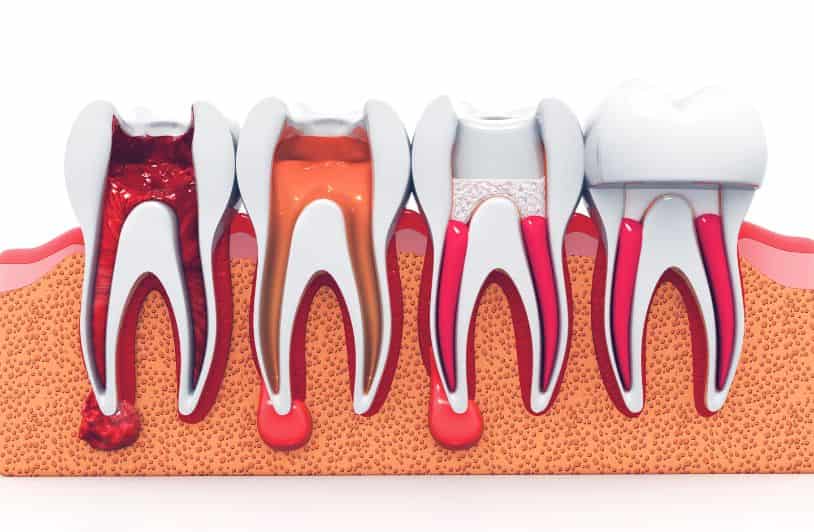You’ve probably heard people talk about root canal treatment, but do you know what it involves? If not, you aren’t alone. Many people have misconceptions about this dental procedure because it sounds scary and painful – after all, it does involve drilling into your tooth! But the truth is that root canal treatment can actually save your teeth from an even worse fate, and it’s fast and relatively pain-free if you go to the right place! In this article, we’ll discuss how the process works and what to expect when visiting your dentist for root canal treatment.
Introduction
Are you looking for a dentist who can perform root canal treatment? If so, you have come to the right place! We are a team of dentists who are qualified and skilled at performing this procedure. Root canal treatment is the process of removing diseased or infected tissue inside the tooth. This can use either a surgical procedure or an endodontic therapy.
Main reasons behind root canal treatment
It is important to know the main reasons behind root canal treatment, as it can help you understand what you are getting yourself into. A tooth gets infect by bacteria and the pulp within it becomes inflame due to the inflammation. This process causes the blood vessels around your tooth to be narrow and might even constrict. If this continues, then an abscess will form, which causes more pain and discomfort. Most often, a dentist for root canal will recommend that you get a root canal treatment in order for your tooth not to get worse and eventually fall out. A root canal treatment typically takes two visits with your dentist for root canal; on the first visit they numb your tooth with a local anesthesia in order for them to do an evaluation of what needs to be done.
Risk factors
There are many risk factors that may predispose a person to the development of endodontic disease. Some of these risk factors include improper brushing, excessive tooth wear and irregular dental care. These factors can lead to the accumulation of plaque and food particles which leads to an increased risk of bacterial infection.
There is also an increased chance of developing endodontic disease if you have a medical condition such as diabetes, if you smoke or chew tobacco, or if you drink excessive amounts of sugary drinks or alcohol. Finally, the presence of systemic diseases such as rheumatoid arthritis will increase your chances for developing endodontic disease due to this condition’s ability to affect the immune system.
Steps in root canal treatment
What are the steps in a root canal treatments? A root canal treatment is a dental procedure that typically involves one or more of the following steps, depending on what needs to be done.
- First, your dentist will numb the tooth and the surrounding area with local anesthetic. This can do with a needle insert into the gum overlying the tooth or by applying it directly to the nerve at the base of your tooth.
- Next, they’ll remove any decay and clean out any infection inside your tooth (or teeth). They may also need to make room for filling material by removing some of your tooth’s enamel.
- Once this is complete, your dentist will fill the space where any decay was remove with either temporary or permanent filling material.
- Finally, they’ll seal off the cleaned-out area from further bacterial invasion by placing a rubber dam around your tooth and infusing it with a special adhesive designed to form an airtight seal against your gums and cheek.
- Sometimes patients experience mild discomfort after their root canal treatment; this should resolve within two days as long as you follow instructions about avoiding biting pressure on the treated tooth during that time period.
Common symptoms of untreated root canal infection
Endodontic treatment is a dental procedure that repairs, or treats the inside of a tooth. It may be necessary in cases where the pulp tissue has died and become infected, or if there is an injury, such as a cracked tooth. Endodontic treatment involves removing the pulp tissue and shaping and filling the root canal system (the hollow space inside the tooth). To do this, dentists will use equipment such as drills and files.
After completing endodontic treatment, your dentist will place a sealant on the tooth. This helps keep any bacteria from entering your bloodstream through the roots of your teeth. Your dentist will also provide you with instructions on what to expect in terms of pain management before you leave his office.
Existing options for endodontic treatment
Endodontic treatment is the name for dental procedures that are done inside the tooth. There are two types of endodontic treatment: root canal therapy and dental crowns. Root canal therapy is a procedure use to clean out and save a tooth that has been damage by an infection. A dental crown can be put on top of an existing tooth or give as part of a full set of teeth in order to protect it from breaking or falling out.

